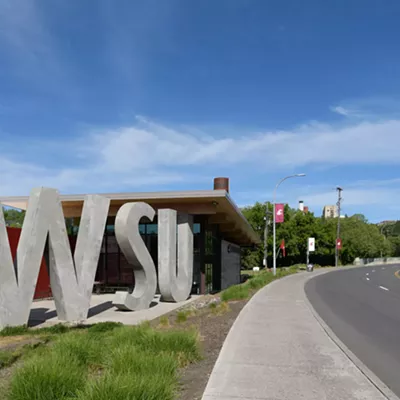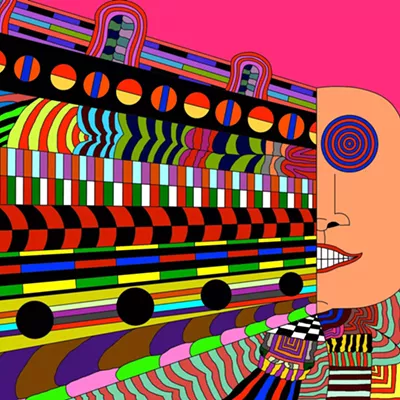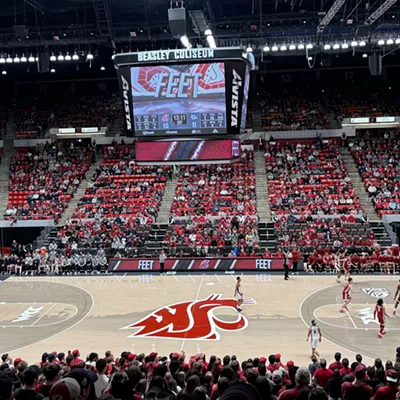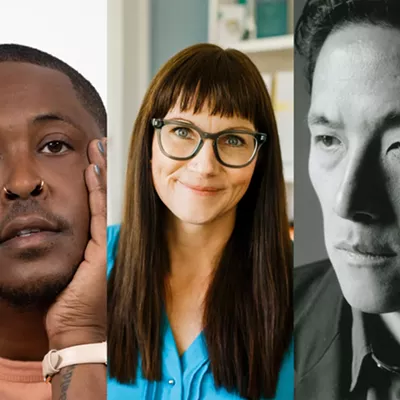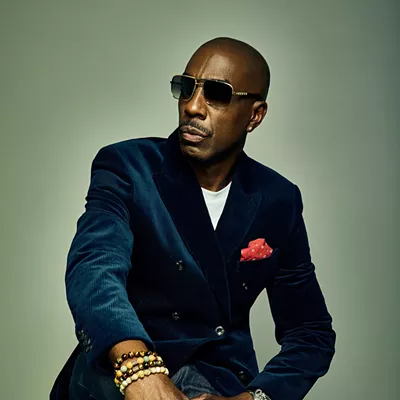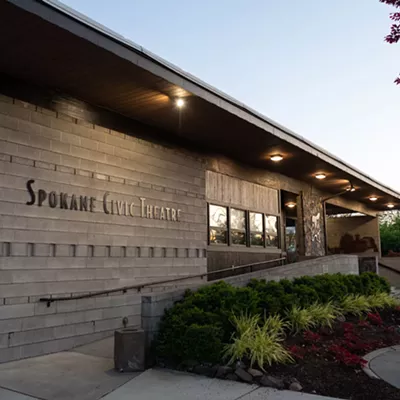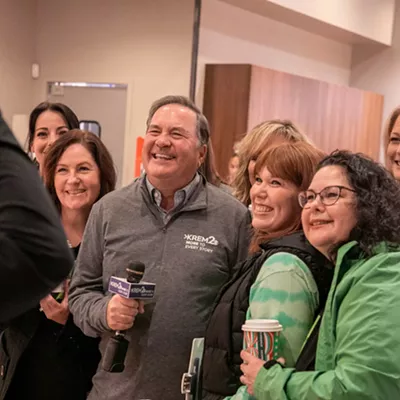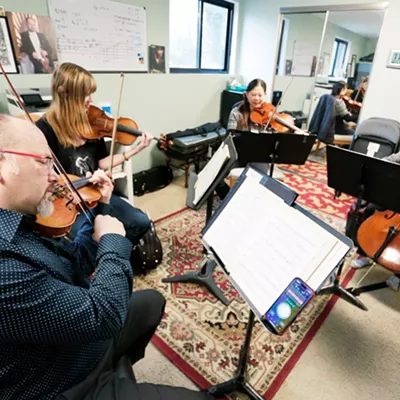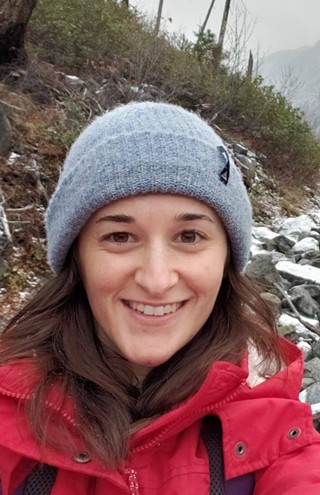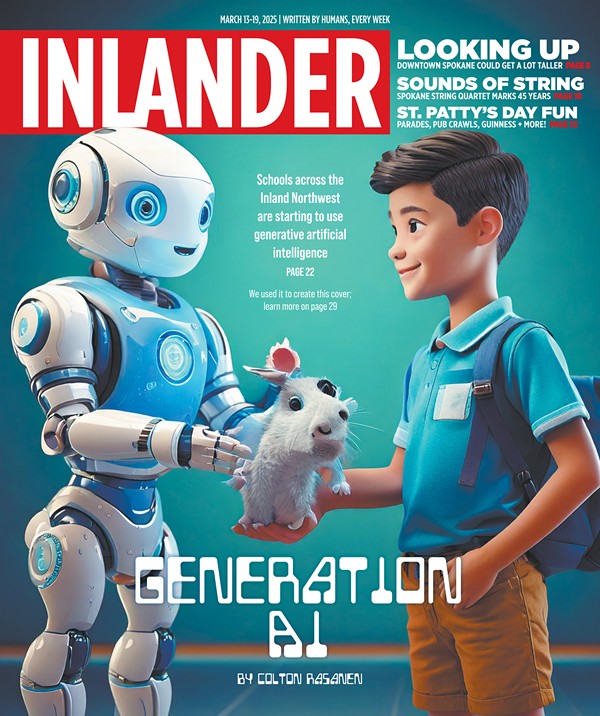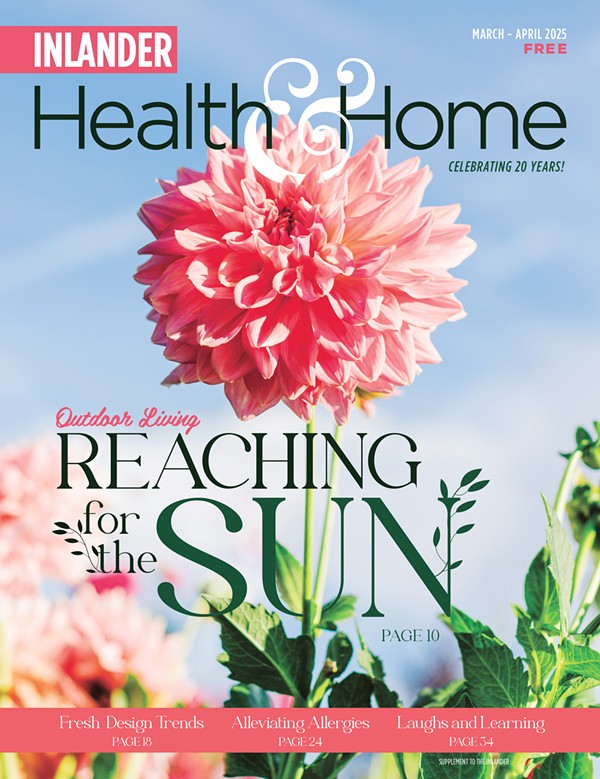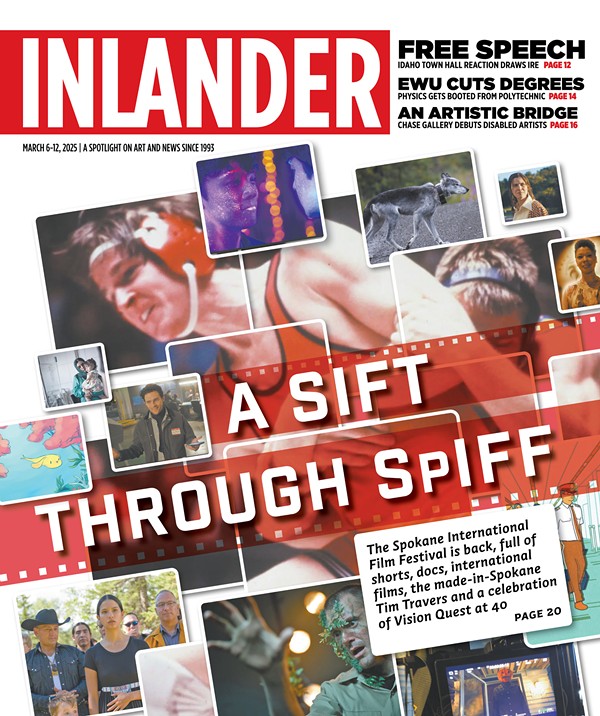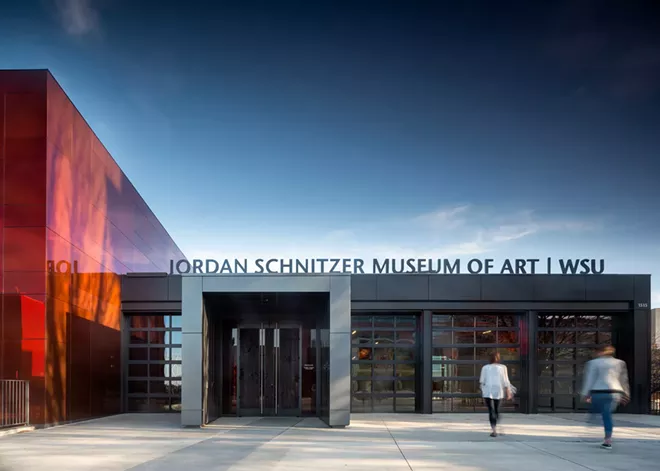
In 1974, the newly opened Washington State University Museum of Art hosted seven exhibitions.
The first featured a collection of Greco-Roman artifacts on loan from the J. Paul Getty Museum in Los Angeles. The second featured 18 of the 22 known etchings from Spanish painter Francisco Goya's Proverb series, with the third highlighting a collection of 20 lithographs from French artist Honoré Daumier. (Both the Goya and Daumier works were on loan from WSU's Holland Library.) The fourth exhibit paired ancient tools from the Pacific Northwest Indian Center of Spokane, later renamed the Museum of Native American Cultures, with their modern counterparts. (Its collection is now part of the Northwest Museum of Arts and Culture.)
The final three exhibitions that year featured works from former WSU President Ernest O. Holland's collection; pieces from the Virginia and Regent Charles W. Orton collection; and portraits of WSU supporters including publishers, educators, state officials and Native American tribal members painted by WSU art professor Worth D. Griffin.
This wide diversity of artwork featured, from classics to pieces from both internationally and locally renowned artists, has been a source of pride for the museum from the very beginning, the cornerstone on which it has grown its collection in the half-century since.
Fifty years after those inaugural exhibits — with a permanent collection that now stands at more than 4,000 pieces — WSU's art museum, now called the Jordan Schnitzer Museum of Art WSU, is celebrating its growth with the exhibition "Your Collection: Celebrating 50 Years." The salon-style exhibition runs through Dec. 13.
To honor the museum's 50th anniversary, WSU is also hosting an afternoon of events on Sept. 26. The day kicks off at 3 pm with a printmaking activity in front of the museum. Then, current and past museum directors, staff and supporters — including Schnitzer — will gather at the museum for a reception and release party for the commemorative book Reflecting Fifty Years.
In addition to the 50-year retrospective this fall, visitors can also view "The Art of Food," which features more than 100 pieces from Schnitzer's collection and is on display through March 8. Schnitzer also leads an "Art of Food" exhibition tour on Sept. 27, followed by a discussion about food insecurity for college students and a pop-up community market.
Now housed in what's affectionately known as the "Crimson Cube," which features six galleries and 14,000 square feet, WSU's art museum had a more humble start in the school's Fine Arts Center.
Initially under the direction of Harvey West, the museum primarily displayed work from students and staff. But within just a few years, as funds for the art department were lacking, it was placed as a department under the provost.
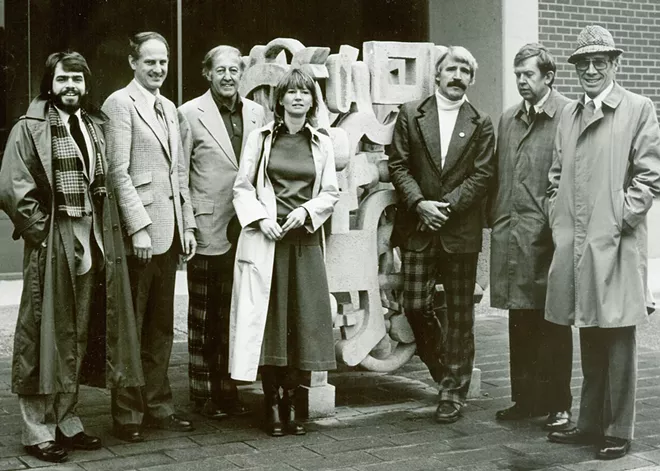
"A lot of people don't know that we have no affiliation with the fine arts department," says Debby Stinson, marketing and PR manager for the Jordan Schnitzer Museum of Art WSU.
"The reason for that is because the Museum of Art and its collection serves the entire WSU community campus as well as all of its visitors and local community. Because of that, we have the ability to collaborate with all departments on campus, as well as groups outside of campus."
Those outside collaborations helped the collection blossom over the years. Many of the works in the collection, Stinson says, were gifted to the museum by other collectors or artists.
Artist Jim Dine, for example, who created The Technicolor Heart, a blue, heart-shaped sculpture adorned with hammers, scissors and other tools that has called WSU home since 2004, donated more than 200 prints of his work to the museum in 2014.
"Many people don't know it, but behind the [Museum of Fine Arts Boston] and the British Museum, our museum has the largest collection of Jim Dine's prints in the world," Stinson says.
As the art world evolved and expanded, so too did the museum's collection. When it was founded, much of its collection featured the impressionist works WSU leaders Holland and Orton were fond of, including pieces by Frank Duveneck and Robert Henri.
Another early piece, William Thomas McDermitt's Road to Albion, which features a tree-lined path through the rolling hills of the Palouse, stands out to Stinson because it shows a time before there was a paved road through the town of Albion.
"It's a beautiful painting of the Palouse way back when," she says.
Over time though, the museum's collection has grown to include works from nearly every culture, medium and art style imaginable, including the abstract paintings of Mark Rothko, pop art of Roy Lichtenstein, photography of Andy Warhol and Cindy Sherman, engravings of Julie Mehretu, ceramic sculptures of Betty Feves and wooden sculptures of Victor Moore.
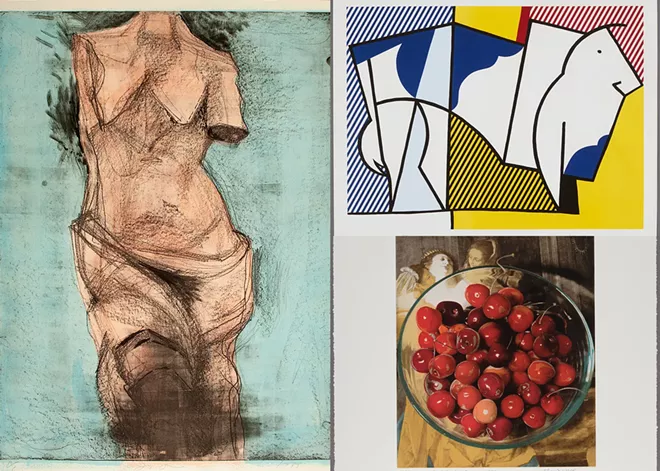
In Reflecting Fifty Years, the commemorative publication about the museum's golden jubilee, art collector Sean Elwood, who earned his bachelor's degree in fine arts from WSU, wrote an essay about his self-imposed challenge to find the through-line among each piece in the collection in an attempt to advise the museum as it moves into its next 50 years.
Turns out it was no easy task.
"I found that despite my connections to the place, the museum's collection was largely undiscovered territory for me, full of new revelations or reminders of things that I'd forgotten," Elwood writes. "I never found that overarching, single through-line that connected all the works in the collection. Instead, I was overwhelmed by the variety. I discovered there was no easily defined overall organizing principle."
That's because, Stinson says, the collection developed over time.
"You can't help but be inspired and look at the world differently when you're exposed to the highest quality of art,"
"Every one of these is completely different," she says of pieces in the collection. "The only overarching theme is what we love and what we've loved through the different centuries."
A love of art has been the foundation for the past and present of WSU's art museum, and is paving the way for the future of the building, too, benefiting WSU's broader community in numerous ways.
An art museum, Stinson says, is a place for students to both have a meditative experience and be engaged in the present moment by interacting with works that elicit emotion, be it joy or anger.
Most importantly, she says, art museums are spaces that nurture creative thinking, something that's required in countless fields.
"You can't help but be inspired and look at the world differently when you're exposed to the highest quality of art," Stinson says. "The museum functions as a repository of creative thought, and that enhances every discipline within the university." ♦
"Your Collection: Celebrating 50 Years" • Through Dec. 13; Tue-Sat from 10 am-4 pm (closed holidays and during WSU breaks) • Free • Jordan Schnitzer Museum of Art WSU • 1535 N.E. Wilson Road, Pullman • museum.wsu.edu



